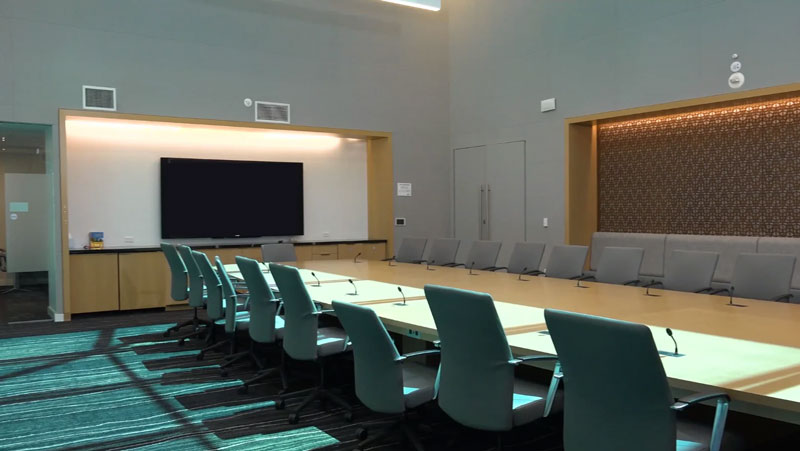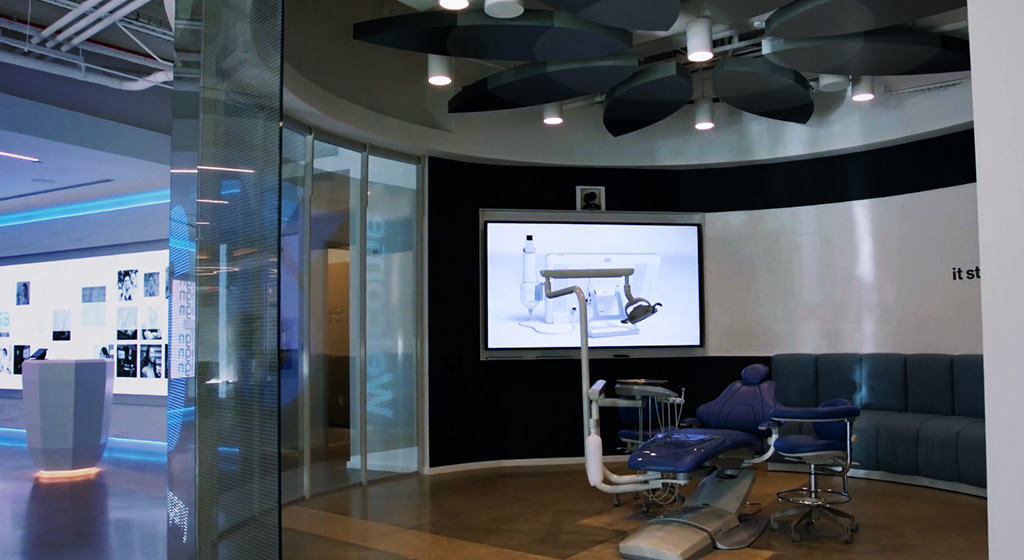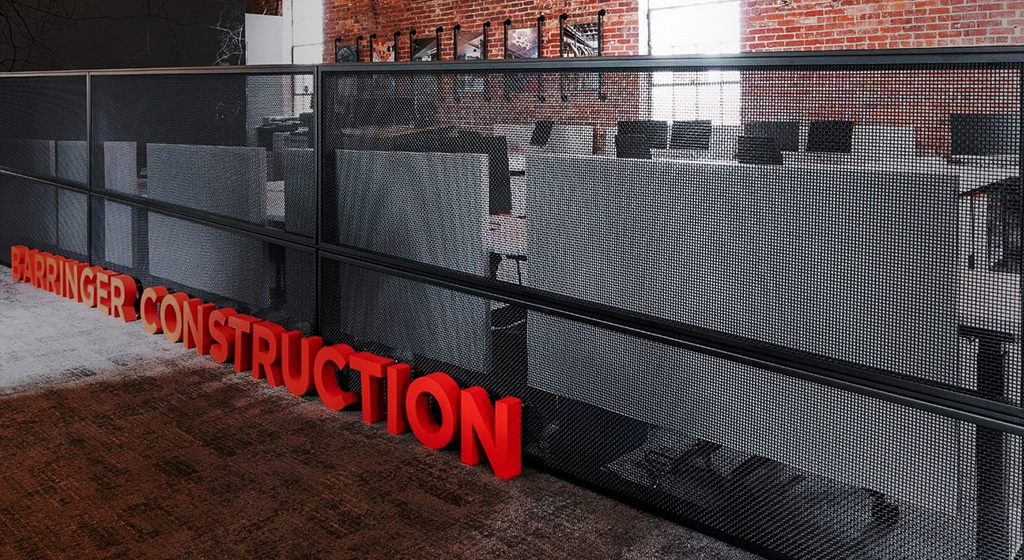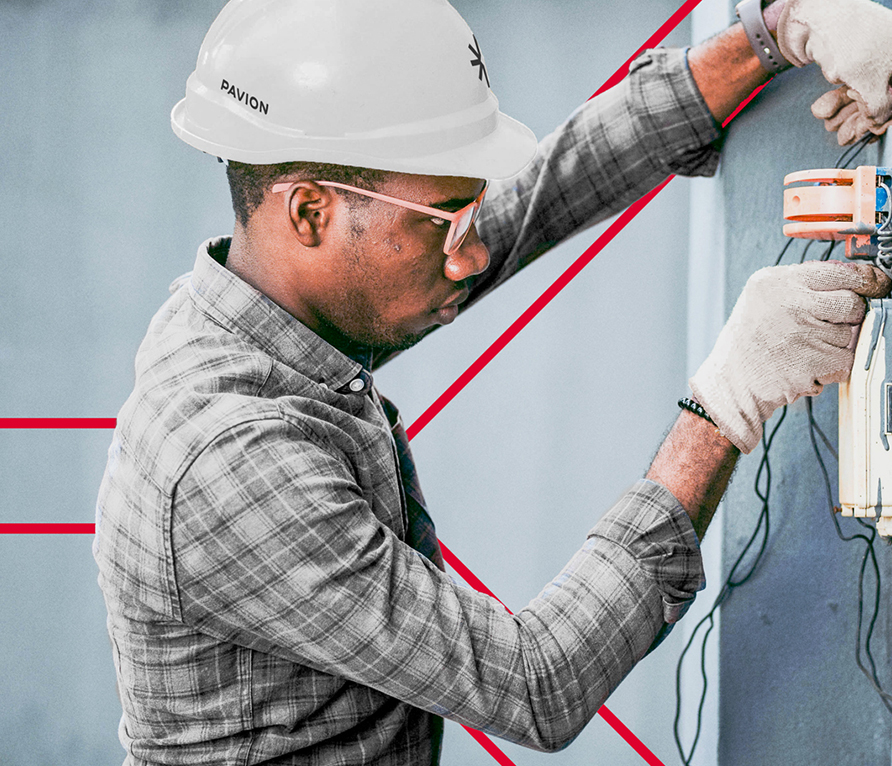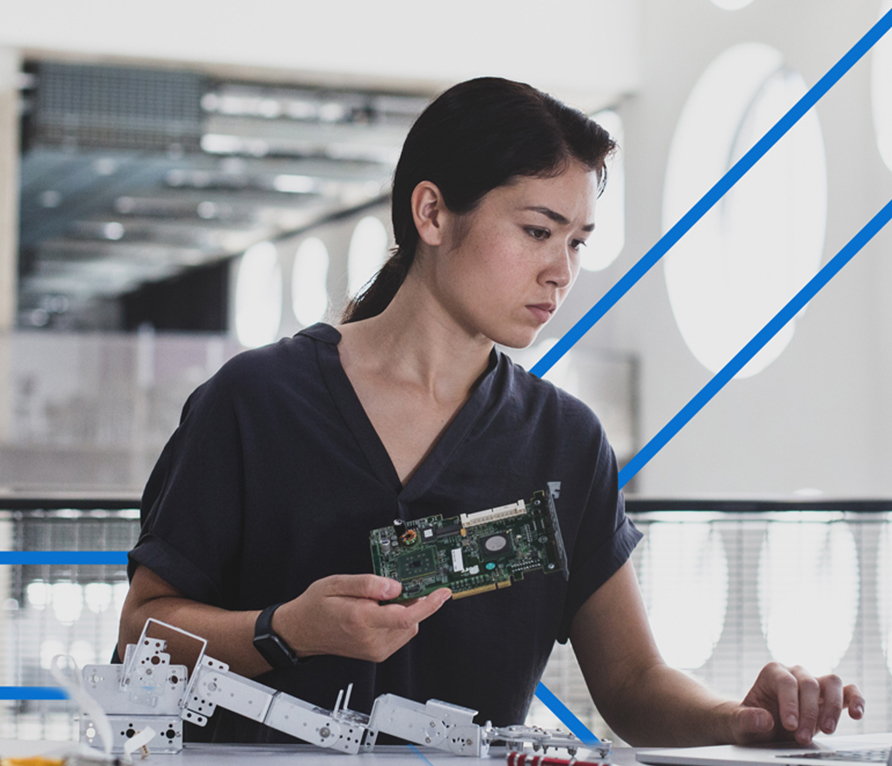
Commercial Security Systems
Bringing Leading Commercial Security Systems for Businesses
Invest in Vigilant Protection for Your Business
Our security systems provide comprehensive protection for commercial spaces, with the use of access control, video surveillance, and intrusion detection to ensure the safety of people and assets 24/7.
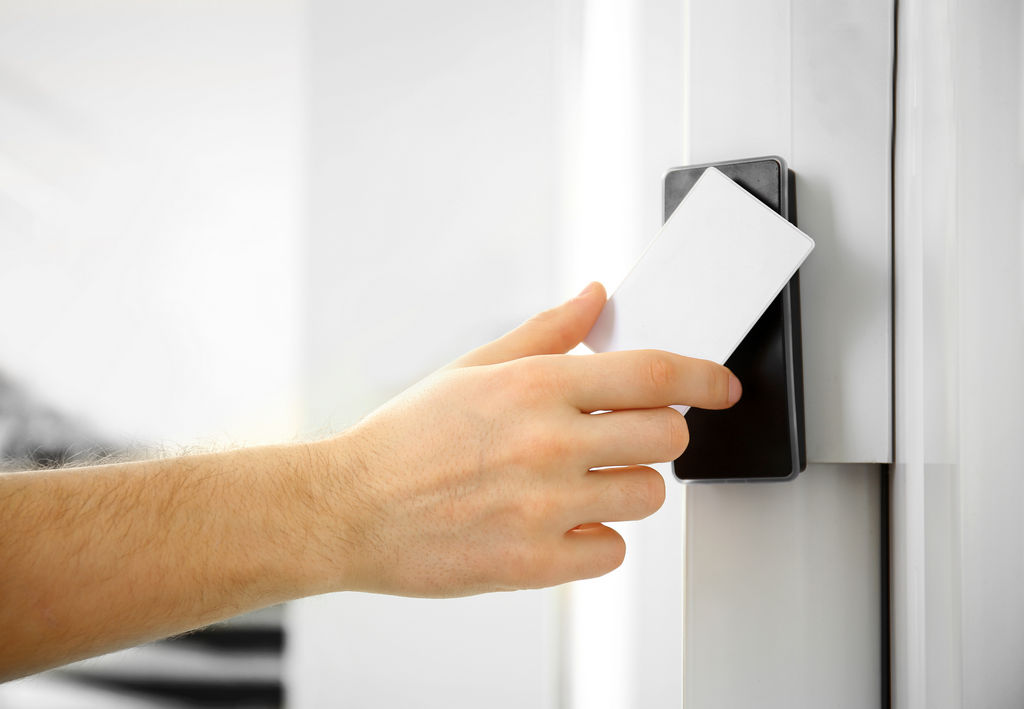
Commercial Security Solutions
Pavion delivers comprehensive business security solutions. Discover access control systems that manage and monitor facility real-time access to advanced video surveillance that captures every angle. Our perimeter defense strategies are custom-tailored to fortify your business against external and internal threats, ensuring a secure environment for your assets and personnel.
Cloud and Premised Based Services For Commercial Security Maintenance Include:
Access Control Systems
Video Surveillance Systems
LPR (License Plate Recognition)
Proactive Monitoring
Physical Barrier Security
Weapon Detection
Intrusion Detection
Thermal Imaging
Video and Intercom Entry Solutions
Emergency Notification and Lockdown Systems
Virtual Guard and Escort Services
Cloud-Based Security Solutions
Streamline your security with Pavion’s cloud solutions. Manage video surveillance, access control, and alarms from a single platform with remote access via mobile or desktop.
Benefits:
- Unified platform for seamless management.
- Real-time remote monitoring and control.
- Scalable technology to grow with your needs.
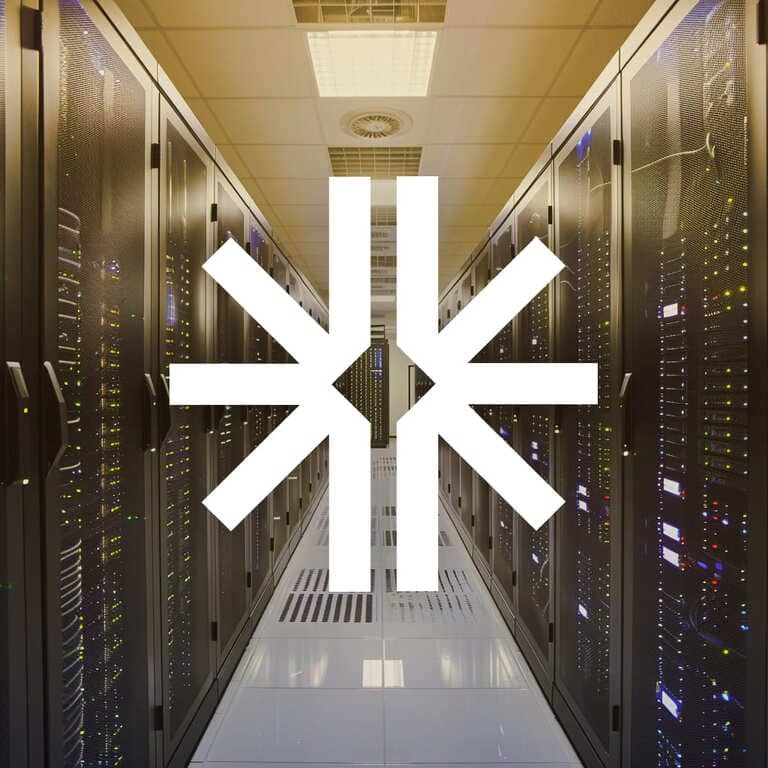
Our Approach to Safeguarding Your Success
We’re with You
Every Step of the Way
Pavion’s security solutions offer advanced systems like Access Control and Video Surveillance, ensuring your business is protected day and night. Their suite of services, including Intrusion Detection and Weapon Detection, provides a secure perimeter and sophisticated monitoring capabilities, all backed by round-the-clock monitoring for complete peace of mind.


Cyber Security to Protect Your Business
Leveraging cutting-edge technology, Pavion offers a wide array of security systems to protect every facet of your organization. From thwarting data breaches with software updates to implementing emergency lockdowns, we ensure regular maintenance and comprehensive protection for your business operations.
Services Include
Ongoing Monitoring Maintenance
Security Assessment
Maintenance, Management and Subscription (aaS)
Ready To Find The Right Security Solution
For Your Organization?
Industries
We Know Your Needs
With our deep industry-specific knowledge, we offer solutions for business owners
that make sense for your industry and your organization.
Destination Retail
Distribution and Storage
Education
Finance and Insurance
Government and Defense
Healthcare and Pharmaceutical
Property Management
Technology and Data Centers
Our Suppliers
Our Premier Equipment and Technology Partnerships
At Pavion, we partner with best-in-class equipment manufacturers and technology innovators, delivering unparalleled solutions that set new standards for operational success and propel businesses to industry leaders.
Why Choose Pavion for Business Security Systems
In today’s fast-paced and technology-driven world, the importance of business security cannot be overstated. As businesses continue to rely more heavily on digital infrastructure, the risks and threats they face are also increasing. That’s why it is crucial for companies to invest in robust and comprehensive security systems to protect their assets, employees, and customers. When it comes to business security, one name stands out from the rest: Pavion. With their cutting-edge technology, unparalleled expertise, and commitment to excellence, Pavion is the ultimate choice for businesses seeking top-of-the-line security solutions.
Understanding the Importance of Business Security
In order to truly appreciate the value of business security, it is essential to understand its role in business success. Security goes beyond protecting physical assets; it encompasses data protection, risk management, and ensuring the smooth functioning of operations. A business that fails to prioritize security is putting itself at risk of theft, cyberattacks, and other potential disruptions. By investing in a comprehensive security system, businesses can safeguard their assets, maintain customer trust, and preserve their reputation.
Business security is not just about locking doors and installing surveillance cameras. It is a multi-faceted approach that requires careful planning and implementation. One aspect of business security is access control. This involves restricting entry to authorized personnel only. By implementing biometric authentication, keycards, or keypad entry systems, businesses can ensure that only those with proper credentials can access sensitive areas. This not only prevents unauthorized individuals from gaining entry but also helps in tracking who enters and exits the premises.
Another crucial element of a robust business security system is video surveillance. Video cameras provide round-the-clock monitoring and recording of activities within and around the premises. This serves as a deterrent to potential criminals and also provides valuable evidence in case of any incidents. With advancements in technology, video surveillance systems now offer high-definition footage, remote access, and intelligent analytics, making it easier for businesses to monitor their premises and respond quickly to any suspicious activities.
Alarm systems, motion detectors, and fire detection systems are also essential components of a comprehensive business security system. These devices ensure immediate response to potential threats, such as break-ins, unauthorized access, or fire emergencies. Alarm systems can be connected to a central monitoring station, which alerts security personnel or emergency services in case of any security breaches. This quick response can help minimize damage and prevent further escalation of the situation.
Integrating all the components of a business security system with a centralized monitoring system enhances efficiency and effectiveness. A centralized monitoring system allows businesses to have real-time visibility of their security measures, enabling them to respond promptly to any incidents or threats. It also provides a centralized platform for managing access control, video surveillance, and alarm systems, simplifying the overall security management process.
The Role of Security in Business Success
Security plays a pivotal role in determining the success or failure of a business. Effective security measures create a safe and secure environment for employees and customers, fostering trust and confidence. When employees feel safe at work, they are more likely to be productive and focused on their tasks. Similarly, customers are more likely to engage with a business that prioritizes their safety and protects their personal information.
Furthermore, a strong security system helps businesses comply with legal and regulatory requirements. Many industries have specific security standards that businesses must adhere to, such as the Health Insurance Portability and Accountability Act (HIPAA) for healthcare organizations or the Payment Card Industry Data Security Standard (PCI DSS) for businesses handling credit card information. By implementing robust security measures, businesses can ensure they meet these requirements and avoid costly penalties or legal implications.
In today’s digital age, data protection is a critical aspect of business security. Cyberattacks and data breaches can have severe consequences, including financial loss, damage to reputation, and loss of customer trust. Businesses need to invest in robust cybersecurity measures to protect their sensitive data from hackers and other malicious actors. This may involve implementing firewalls, encryption protocols, regular security audits, and employee training on cybersecurity best practices.
In conclusion, business security is not just a matter of locking doors and installing cameras. It is a comprehensive approach that encompasses access control, video surveillance, alarm systems, and centralized monitoring. By prioritizing security, businesses can protect their assets, maintain customer trust, and ensure the smooth functioning of operations. Investing in a robust security system is an integral part of overall business strategy and is essential for long-term success.
Why Pavion Stands Out in Business Security
When it comes to business security, Pavion is in a league of its own. With years of experience and a deep understanding of the industry, Pavion has earned a reputation for excellence and innovation. Their approach to business security is unmatched, combining state-of-the-art technology with proactive strategies to stay ahead of emerging threats. Furthermore, Pavion’s commitment to providing personalized solutions sets them apart from their competitors, ensuring that each security system is tailored to the specific needs of the business.
At Pavion, the team understands that the security landscape is constantly evolving, and businesses need to adapt to stay protected. With this in mind, Pavion takes a holistic approach to business security that encompasses prevention, detection, and response. They understand that a proactive stance is essential to mitigate risks before they escalate into full-blown crises. By conducting thorough risk assessments and identifying vulnerabilities, Pavion develops customized security solutions that effectively address the unique needs and challenges of each business. Additionally, their dedication to ongoing monitoring and continuous improvement ensures that security systems remain up-to-date and capable of tackling evolving threats.
What sets Pavion apart from their competitors is their commitment to delivering cutting-edge technology and innovative features. Pavion’s security systems utilize advanced video analytics that can detect anomalies and potential threats in real-time. These systems are also equipped with intelligent algorithms that can differentiate between genuine security threats and false alarms, minimizing unnecessary disruptions. Moreover, Pavion offers remote monitoring services, enabling businesses to keep an eye on their properties from anywhere in the world, providing peace of mind and convenience.
When it comes to business security, Pavion stands out not only for their expertise and innovative solutions but also for their dedication to customer satisfaction. The team at Pavion takes the time to understand the unique needs and requirements of each business, ensuring that the security system is tailored to provide maximum protection. They work closely with their clients, providing ongoing support and guidance to ensure that the security system remains effective and efficient.
Furthermore, Pavion understands that security is not just about technology but also about people. They prioritize training and education, ensuring that their clients have a thorough understanding of how to use and manage their security systems effectively. This commitment to empowering businesses with knowledge and skills sets Pavion apart as a leader in the industry.
In conclusion, Pavion’s exceptional approach to business security, combined with their commitment to innovation and customer satisfaction, make them the go-to choice for businesses looking to protect their assets and ensure the safety of their employees. With Pavion, businesses can have peace of mind, knowing that they have a reliable and advanced security system in place.
Evaluating Pavion’s Business Security Solutions
When considering Pavion for your business security needs, it is important to understand the various components and features that their security systems offer.
Pavion is a leading provider of comprehensive business security solutions, offering a wide range of cutting-edge technologies and services to safeguard your organization. With a strong focus on customization and tailored solutions, Pavion ensures that your unique security requirements are met with precision and effectiveness.
Pavion’s Security System Components
Pavion offers a wide range of security system components that can be customized to meet the requirements of any business. These components include:
- Surveillance Cameras: Pavion provides state-of-the-art surveillance cameras that offer high-resolution video footage, advanced analytics, and remote monitoring capabilities. These cameras capture every detail, ensuring that no suspicious activity goes unnoticed.
- Access Control Systems: With Pavion’s access control systems, you can regulate and monitor access to your premises, ensuring that only authorized personnel can enter restricted areas. These systems can be integrated with biometric technology, such as fingerprint or facial recognition, for enhanced security.
- Intrusion Detection Systems: Pavion’s intrusion detection systems utilize advanced sensors and alarms to detect unauthorized entry attempts. These systems can be seamlessly integrated with other security components, triggering immediate alerts and response actions.
- Fire Detection Systems: Pavion’s fire detection systems detect smoke, heat, and other signs of fire, enabling early detection and rapid response. These systems can be integrated with sprinkler systems and emergency evacuation protocols to minimize damage and ensure the safety of your employees.
Additionally, Pavion provides intelligent software that integrates all these components, allowing for seamless communication and centralized control. This software enables real-time monitoring, data analysis, and remote management, empowering you with comprehensive situational awareness and control over your security infrastructure.
Customizing Your Pavion Security System
One of the key strengths of Pavion is their ability to tailor security systems to the specific needs of each business. They understand that a one-size-fits-all approach does not work when it comes to security, as different businesses have different risk profiles and security requirements.
Pavion’s team of experts works closely with clients to evaluate their unique needs and visualize a customized security solution that maximizes protection while minimizing costs. Through a thorough assessment of your organization’s vulnerabilities, assets, and operational dynamics, Pavion ensures that every aspect of your security system is optimized for effectiveness and efficiency.
Moreover, Pavion’s customization capabilities extend beyond hardware and software. They also offer comprehensive security consulting services, providing expert guidance on security policies, procedures, and best practices. With Pavion as your trusted security partner, you can benefit from their extensive industry knowledge and experience, ensuring that your security strategy aligns with industry standards and regulatory requirements.
Furthermore, Pavion’s commitment to customer satisfaction extends beyond the initial implementation. They provide ongoing support, maintenance, and system upgrades to ensure that your security infrastructure remains up-to-date and resilient in the face of evolving threats.
In conclusion, Pavion’s business security solutions offer a comprehensive and customizable approach to safeguarding your organization. With their advanced security system components, intelligent software integration, and expertise in customization, Pavion is well-equipped to meet the unique security needs of businesses across various industries.
The Process of Implementing Pavion Security Systems
Implementing a Pavion security system involves a comprehensive and well-defined process. With years of experience in the industry, Pavion has developed a streamlined approach to ensure that their clients receive the highest level of security.
When a client decides to implement a Pavion security system, the first step is conducting a thorough site survey. This is a crucial stage as it allows Pavion’s team of experts to assess the premises and identify potential vulnerabilities. By carefully examining the layout of the building, the team can determine the most effective placement of security devices to maximize coverage and minimize blind spots.
During the site survey, Pavion also takes the time to understand the client’s specific security requirements. Every business has unique needs, and Pavion recognizes the importance of tailoring their solutions accordingly. By engaging in detailed discussions with the client, Pavion ensures that the security system meets their specific needs and expectations.
Based on the information gathered during the site survey, Pavion develops a detailed plan. This plan includes the placement and configuration of security devices, wiring requirements, and integration with existing systems. Pavion’s team of experts carefully considers every aspect to ensure that the security system is seamlessly integrated into the client’s operations.
Once the plan is approved, the installation phase begins. Pavion’s team of highly skilled technicians takes charge of installing the security devices and configuring them to function seamlessly. With their expertise and attention to detail, Pavion’s technicians ensure that every component is installed correctly, leaving no room for error.
Pavion understands that security systems require regular maintenance to ensure optimal performance. To address this, they offer comprehensive maintenance packages that include routine inspections, software updates, and troubleshooting services. By regularly inspecting the system, Pavion can identify and address any potential issues before they escalate.
In addition to routine maintenance, Pavion provides 24/7 technical support to address any potential issues that may arise. Their dedicated team of support staff is always available to assist clients, ensuring that their security system remains operational at all times.
By choosing Pavion, businesses can rest assured that their security system will be well-maintained and continue to provide the highest level of protection. With their comprehensive approach to implementation and ongoing support, Pavion is a trusted partner in safeguarding businesses and their assets.
The Long-Term Benefits of Choosing Pavion
Choosing Pavion for your business security needs brings numerous long-term benefits. In addition to providing reliable security solutions, Pavion offers a range of advantages that can enhance your business’s overall growth and success.
Pavion’s Commitment to Ongoing Security Innovation
Pavion recognizes that security threats are constantly evolving, and therefore, they continuously invest in research and development to stay ahead of the curve. By choosing Pavion, businesses can be confident that their security systems are equipped with the latest technology and features, ensuring optimal protection against emerging threats.
With a dedicated team of experts, Pavion stays up-to-date with the latest trends and advancements in the security industry. They actively monitor the landscape to identify potential vulnerabilities and develop innovative solutions to address them. This commitment to ongoing security innovation ensures that Pavion’s clients always have access to cutting-edge security technology.
Moreover, Pavion’s research and development efforts extend beyond technology. They also focus on understanding the psychology of criminals and analyzing their tactics. By gaining insights into the minds of potential threats, Pavion can develop proactive security measures that effectively deter and prevent criminal activities.
The Impact of Pavion Systems on Business Growth
Investing in a Pavion security system not only protects a business from potential threats but also has a positive impact on its growth. By offering a secure environment for employees and customers, businesses can foster trust, enhance productivity, and attract more customers.
When employees feel safe and secure in their workplace, they are more likely to perform at their best. A Pavion security system creates a sense of safety, allowing employees to focus on their tasks without worrying about their well-being. This increased productivity translates into better business outcomes and overall growth.
Furthermore, having a robust security system in place can open doors to new opportunities by meeting stringent security requirements set by clients or regulatory bodies. Many industries, such as healthcare, finance, and government, have strict security standards that businesses must adhere to in order to operate. By choosing Pavion, businesses can ensure that they meet these requirements and position themselves as trustworthy partners.
Moreover, a Pavion security system can enhance customer confidence and attract more clients. Customers are more likely to engage with businesses that prioritize their safety and security. By prominently displaying Pavion’s state-of-the-art security measures, businesses can instill trust and differentiate themselves from competitors.
In conclusion, when it comes to business security systems, Pavion is the clear choice. With their comprehensive and innovative approach, tailored solutions, and ongoing commitment to excellence, Pavion offers businesses the peace of mind and security they need to thrive in today’s challenging landscape. By choosing Pavion, businesses are not only investing in top-of-the-line security technology but also in their own success and future growth. Don’t leave the security of your business to chance – choose Pavion today!
Our Customers
Building Lasting Relationships
Our unmatched service and collaborative approach set us apart.
We’re proud to call these industry leaders our customers:

